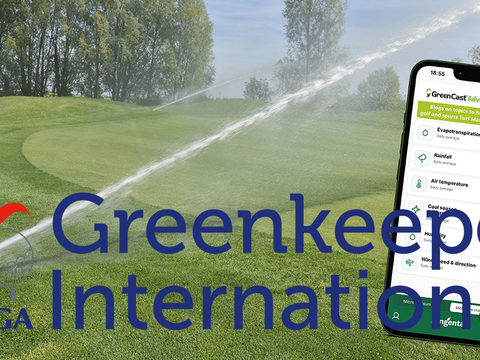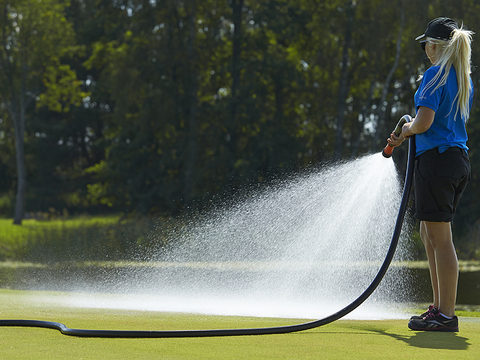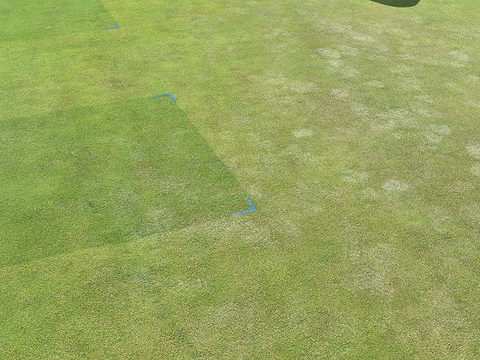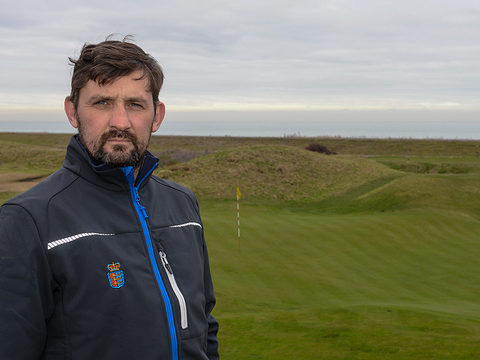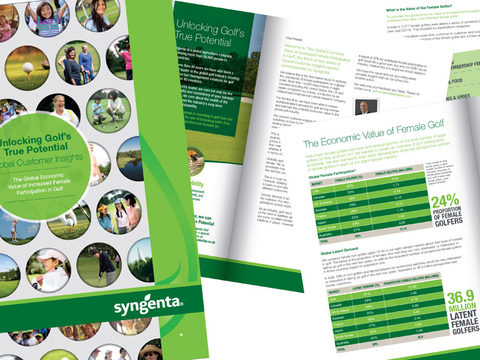ITM approach to moisture
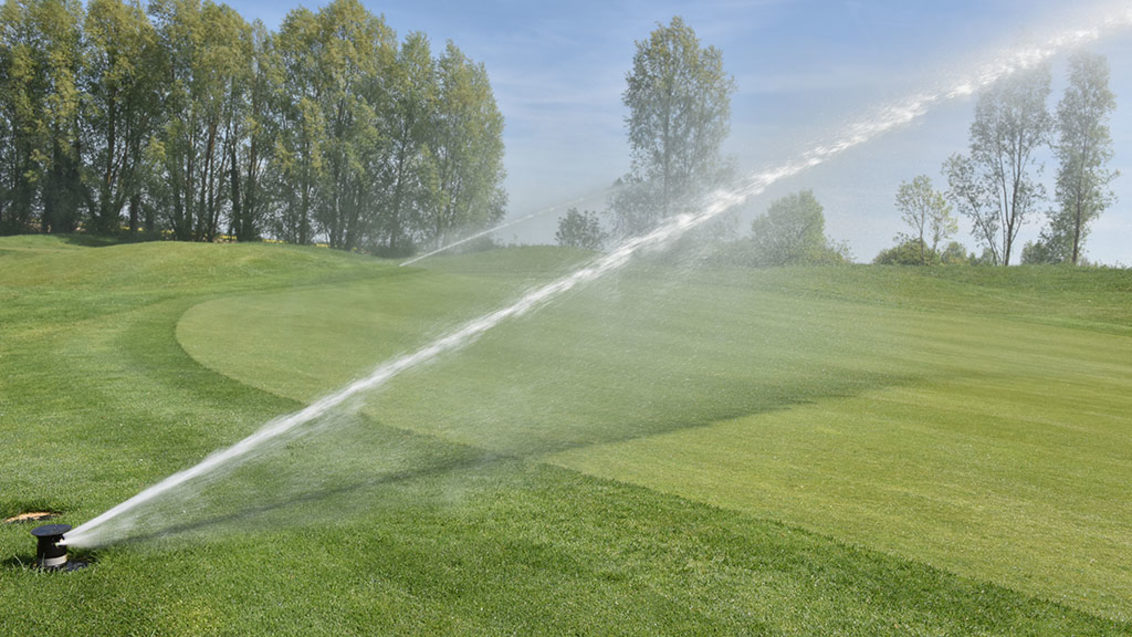
Integrated Turf Management plans are now integral to most course managers approach to tackling disease. Should we be employing the same responsible ITM strategies to improve water resource use – utilising the full toolbox of techniques to reduce risks and minimise impacts?
There are two prime drivers to focus on ITM to improve water use, writes Syngenta Technical Manager, Glenn Kirby. Firstly, climate change resulting in prolonged periods of hot dry weather with reduced water availability is exacerbating the situation, and secondly effective ITM plans can potentially avoid wasteful use of inputs that bring little or nothing to the party.
Just as with ITM for disease, many course managers are already using practices to help healthy turf better cope with the effects of drought and heat. Pulling them together into a recognised plan of action can ensure the optimum use of each input, time and effort, and produce better long-term results for turf quality and resilience to climate challenges.
ITM practices for improved water use include:
- Assessing water loss
- Irrigation scheduling
- Aeration practices
- Wetting agent programmes
- Encouraging rooting
- Cutting height
- Turf species
Weather records highlight that 13 of the hottest summers on record have occurred in the past 20 years. Meteorologists suggest we should now plan to expect severe heat effects in at least two years out of three in the foreseeable future.
While rainfall trends indicate the overall volume of water received in the UK should not be limiting, the fact that it is becoming more irregular in its patterns and that we are experiencing prolonged periods of dry weather, does have serious implications for turf health and surface quality.
Managing moisture is a year-round issue, with two contrasting objectives for turf management. When there is excess water, it’s all about infiltration rates and investment in measures to move moisture away quickly through a free draining profile, to retain surface firmness for players.
However, that then creates an even greater challenge for periods when there is insufficient water.
The physics of water retention in the soil profile sees moisture bound in air voids between solid particles and organic matter, where it can be accessed by turf roots.
Because water molecules are so good at forming hydrogen bonds with themselves, they will only link onto molecules or ions that least disrupt this H-bonding. Sand has an extremely limited capability to link to water molecules. Every action to reduce organic matter levels and ameliorate with sand - necessary to improve the firmness and quality of greens, along with reducing disease risks - lowers the water holding capacity of surfaces.
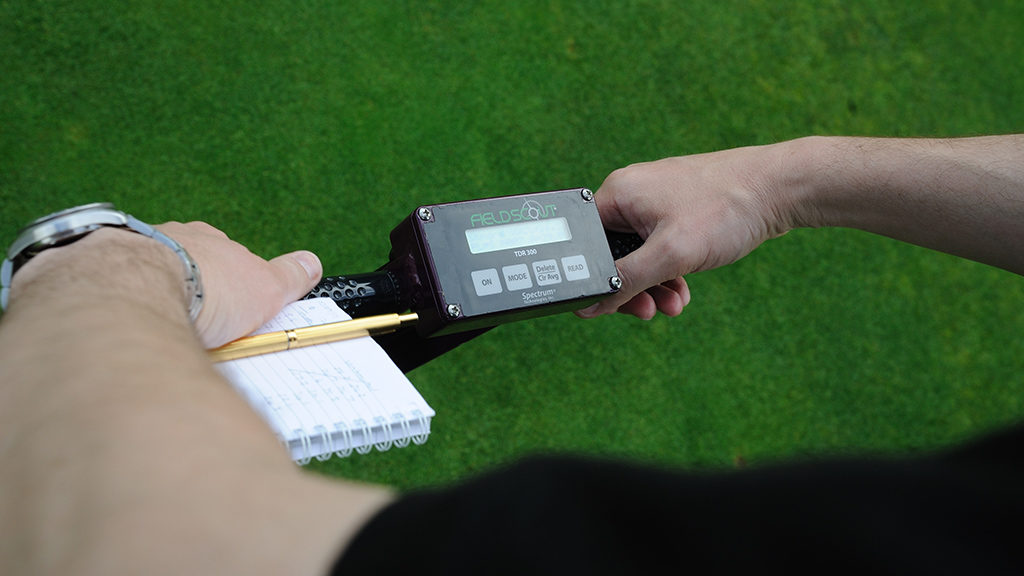
The water holding capacity can be made significantly more difficult where the mineral surfaces have become hydrophobic. Hydrophobicity can be caused by several factors, but is most often the result of the release of lipids during organic matter decomposition. When soil particles are coated with lipid, they naturally repel water.
Soils that have historically had high levels of organic matter, with its associated decomposition, are inherently more likely to be hydrophobic. In the long-term, lower organic matter levels will reduce the issue and hydrophobicity does naturally decline over time and with rainfall. In the short-term, the use of specific wetting agents can help to mitigate its effects and, more effectively, to prevent the build-up hydrophobicity in the first place.
Organic matter decomposition by soil-borne fungi – often typified by the appearance fairy ring – can also be linked to hydrophobicity. Targeting fairy ring with fungicide and wetting agent programmes, linked to irrigation scheduling, can help to minimise any effects.
Look out for a future GI Insight feature on fairy ring management
A better understanding of evapotranspiration and water requirement for turf around the course under different environmental conditions is essential to formulate, and constantly adapt, irrigation requirements with available resources. At its simplest it is replacing water in: to water out, but the nuance is calculating how much of a deficit can be tolerated before issues arise. The stronger the turf, the greater the buffer against the impacts of short-term moisture deficits.
With many golf courses under pressure for increasingly scarce and expensive summer water resources, irrigating less frequently but with a higher water volume that soaks in is recognised as more effective for water use efficiency, rather than repeatedly applying a small amount of water which is more susceptible to surface evaporation.
However, for that strategy to be really effective, the water must remain accessible in the soil profile at a point where the plants can make use of it.
That involves a two-prong approach of appropriate soil conditions and depth of plant rooting.

Trials have shown the use of Qualibra wetting agent, containing a combination of both penetrant and polymer agents, can quickly move water down through the profile to retain surface firmness - from irrigation or rainstorm - while holding more moisture at depth where it is accessible to roots.
At a depth of six to eight cm the Qualibra treatment held 21% more moisture compared to untreated, with 17% higher levels at 12 cm. Other wetting agents in the European Institute of Turfgrass Science research only increased moisture retention at depth by 9% and 6% respectively.
Research has also shown that improving the moisture retention at depth also significantly helps to maintain root mass. In summer, the volume of turf roots can die back significantly in dry conditions, most typically the ultra-fine micro hair roots responsible for most moisture and nutrient uptake. Holding soil moisture at depth has been shown to keep the roots intact to make better use of water resources and fertiliser – further helping to enhance turf through the season.
Other ITM practices to increase root volume and depth of penetration will also enable plants to make better use of water resources.
Aeration remains an essential practice to create the healthy balance of air and water in the soil profile to encourage rooting. New research continues to refine the timing and intensity of aeration operations to optimise results for plant health and surface quality, with the constraints of what is acceptable to players in a busy season.
One element of the ITM approach that can further help rooting and water use efficiency is the Primo Maxx programme. Trials have shown regulating grass plant growth can encourage a significant increase in root mass, with the greater build up in the spring being better retained through the summer. Research has shown over 24% increase in root mass anchorage with a treatment programme, along with image analysis showing more than 50% deeper root penetration.
Reduced leaf offtake of turf under a Primo Maxx PGR programme - shown to be cut by over 30% during peak growing season - also reduces the drain on root resources to maintain the plant. Studies have shown turf quality and playability, in terms of speed and smoothness, can be retained or improved at a longer hight of cut, compared to untreated, which can have a huge implication for turf health and water use efficiency.
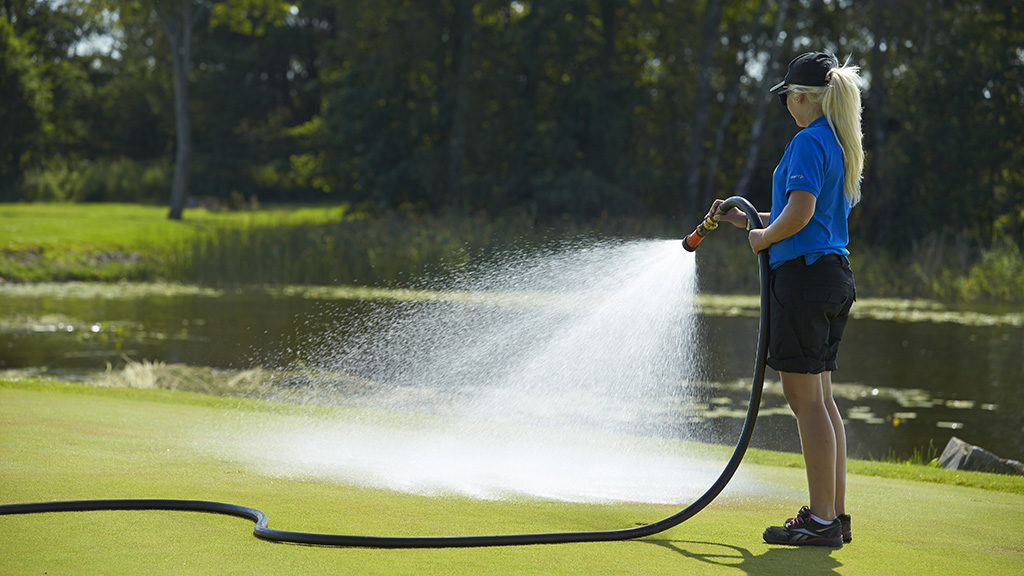
Experience and records will highlight areas of the course particularly prone to drying out, possibly with a map of hotspots that frequently require supplementary hand watering. This understanding is built from large levels of data gathering with a soil moisture probe which has become a vital tool in the battle to ensure appropriate levels of moisture is being held in the soil profile.
As we look to the future aerial photography is becoming increasingly accessible and accurate levels are improving, which can help to build up a picture of areas for closer attention – either by simple drone or sophisticated satellite imagery. While thermal heat maps and NDVI plant health images can be influenced by many factors, their ability to be an early indication of soil moisture implications is showing some promise.
The technology costs associated with in ground soil moisture probes is reducing, bringing the potential of real-time soil moisture level monitoring, updated every 15 minutes, within financial reach of most golf clubs. This technology, if set up to measure at multiple depths, could really make the difference by allowing watering programmes to be fine-tuned to help reduce water usage, along with improving how water Is used
Monitoring soil moisture really comes into its own to identify issues before plants start to show symptoms of drought stress.
Typically, turf can be reasonably resilient to moisture deficit, if all other conditions are optimum. But when other turf stresses are impacted - such as high light, extreme temperature, foot traffic or lower cut height – compounded results can be catastrophic.
Identifying where dry patches are most prevalent can enable more targeted applications of wetting agent, such as making a double pass with the sprayer on the most susceptible areas when applying Qualibra, for example. It could also influence layout of courses, or areas where more drought tolerant varieties or grass species could be better options.
The challenges of water resources are only going to get more complicated. Developing an ITM strategy over the coming seasons will ensure courses are better placed for avoiding long-term impacts.


